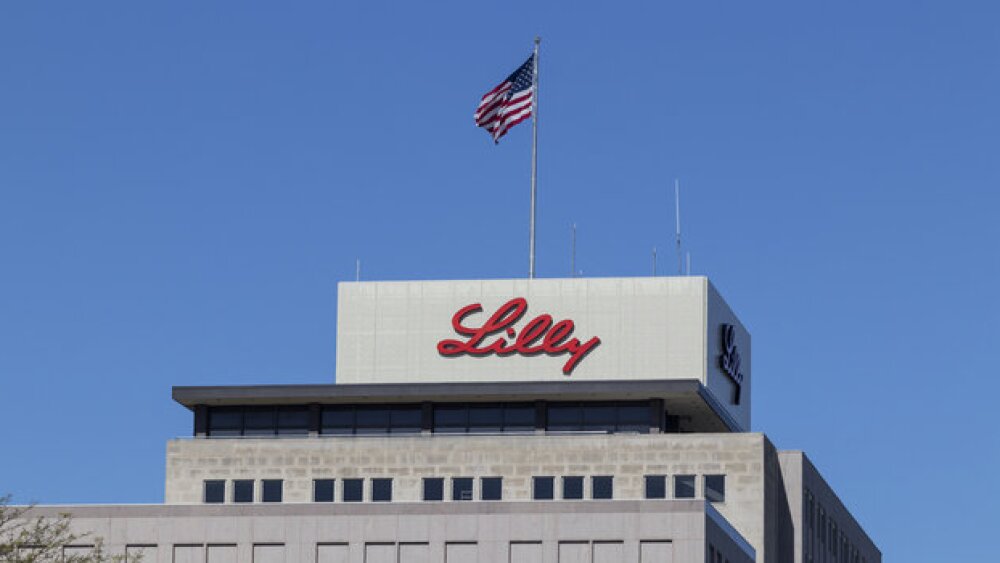The word “children” may come second in their name, but Seattle Children’s Hospital is proving they truly put children first.
Photo courtesy of Seattle Children’s Therapeutics.
The word “children” may come second in their name, but Seattle Children’s Hospital is proving they truly put children first.
This year the hospital has launched a new non-profit, biotech-like enterprise called Seattle Children’s Therapeutics completely devoted to next-gen cell and gene therapies to fight childhood cancers. At the helm is immunology expert Michael Jensen, M.D. BioSpace spoke with Jensen about his current work and vision for the future of SCT.
“The scenario we find ourselves in today is we can build and operate children’s hospitals with all the technology that’s available to make it efficient and safe for kids. But if we’re not also updating the medicine kids can receive in those hospitals, then we’re not advancing the cure for healthy lives in the same way that we’re advancing infrastructure for caregiving,” Jensen said.
The most common treatments for childhood cancers remain as they have for years - chemotherapy, radiation and surgery. Many of the chemotherapy treatments given today were developed fifty years ago. Jensen believes our children deserve better.
According to Jensen, the problem is that kids are not usually prioritized by biotech companies for R&D. This isn’t to say they don’t want to help children. Of course they do. But most developers do not have unlimited funding. The cost of drug development is astronomical. Typically, biotechs get one or two shots to be successful so their targets have got to be big. Considering childhood cancers only account for less than 1% of cancer diagnoses in the U.S., it just isn’t feasible for many those developing therapies with the latest, cutting edge cell and gene technologies. But for the estimated 16,000 kids hearing that world-halting diagnosis for the first time this year, someone’s got to be fighting for them.
Jensen and his 130-person team are armed and on the front lines for America’s children. Their focus at the moment is on creating CAR-T cell therapies to treat pediatric cancers. They have a dozen clinical trials in process with their primary programs aimed at three areas: hematologic malignancies, solid tumors and brain tumors. Jensen is particularly proud of their brain tumor program. Currently in recruiting status, their study includes enrollment of children with diffuse intrinsic pontine glioma, a brain stem glioma that is completely incurable. Historically, parents receiving this diagnosis for their child are then quoted with a number of months for remaining life expectancy. SCT hopes to change that harsh reality with their cutting-edge therapies.
The enterprise is efficiently designed to move promising therapies quickly through R&D, and into Phase I and Phase II clinical trials. If it’s ready to go into a licensing trial after that, they work with a partner for-profit company to take it to final approval and global commercialization. If there isn’t a good fit out there already, SCT will look to launch a new company from their biotech incubator that can run with it.
Conducting clinical trials for pediatric therapies isn’t easy. As childhood diseases are rare, it’s difficult finding enough candidates to enroll. While adult trials can typically be enrolled in a year using just one or two hospitals, it can often take up to three years and dozens of trial sites in pediatric studies. During Jensen’s first five years with Seattle Children, they had families flying in not only from other states but even other continents. Many families would sell their homes to bankroll a move to Seattle, just to give their kids a fighting chance. Jensen said this type of setup bankrupts families and makes the therapies less democratized in terms of accessibility, creating socioeconomic barriers to get treatment.
In 2013, the early stages of their work, a Portland family was helplessly watching their daughter fight for her life, preparing their hearts for the worst. Eight-month-old Greta Oberhofer had already been through a bone marrow transplant in an attempt to treat her aggressive leukemia. After a harrowing stay in the PICU and return home, she relapsed just months later. Odds of survival quoted for little Greta were a heartbreaking 10%. About that time Greta’s mom heard about Seattle Children’s Pediatric Leukemia Adoptive Therapy. PLAT-02 had just opened to babies – no other cancer immunotherapy trial in the country was accepting such young, high-risk candidates. The family immediately packed up and arrived in Seattle hoping for a miracle.
Baby Greta received her reengineered T-Cells as soon as she had gained some weight and was healthy enough for the trial. Her parents anxiously watched over the next days, waiting for her to spike a fever –the indication the T-Cells are working, attacking the cancer cells like they would an infection. After seven nerve-wracking days, Greta spiked a fever at 104 and returned to Seattle Children’s for supportive care and testing. The cancer that had almost extinguished her little life was now gone, destroyed completely by her own immune system in a matter of days. Greta is now in her sixth year of remission. She has a few long-term effects from her many cancer treatments before the T-Cell therapy, but is full of life and joy.
“I hope someday, when another mother walks into a hospital with a pale baby and finds out they have cancer, the doctors will say, ‘We’re going to take some T cells out of your child, put them back in two weeks later, and they will be cured,’” said Greta’s mother, Maggie Oberhofer.
Not all children respond as incredibly as Greta to the T-Cell therapy. And that’s where Jensen compares his team’s work to that of a software developer. They come out with a really good product, version 1.0, but it’s not perfect. As issues arise, they go back to the lab to tweak and adjust and roll out the updated version again and again. For example, 93% of kids with relapsed leukemia, children that would be considered too sick for conventional treatment, achieved complete remission within three months of receiving CAR T-Cells. However, in half those patients, the disease recurred within the year.
To counteract the recurrences, SCT has four additional trials going with preventative measures like boosting the CAR-T cells for cases where they didn’t last long enough, targeting more than one antigen for patients that experience antigen escape (when the leukemia stops expressing the molecule the CAR-T cells can recognize), and humanizing the chimeric antigen receptors so that they’re less likely to be recognized and rejected by the patient’s immune system.
To help more kids like Greta access their CAR-T cell therapy trials, Jensen founded Cure Works, a collaborative organization that connects SCT’s programs with hospitals around the continent. Cure Works is the first of its kind – an experiment, as Jensen called it. With this collaboration trials go far more efficiently. SCT gets the data faster and are able to translate it into more effective therapies for patients. Right now, Cure Works is partnered with 5 hospitals – Seattle Children’s, Children’s National in DC, Riley Children’s in Indiana, BC Children’s in British Columbia and Children’s Hospital Los Angeles. The goal is to have a partnership with a hospital in every major geographic area so families needing life-saving treatment for their child will have no more than a four-hour car ride to get it.
As a non-profit, SCT has relied on philanthropy for funding. Longtime supporter Safeway Albertsons has been critical to making their cancer immunotherapy research possible.
“At Safeway Albertsons, we’re incredibly proud to stand alongside our community with a shared passion for supporting Seattle Children’s. Our annual check-stand campaign, golf event and vendor sponsorship programs have raised more than $6 million in the last five years and given everyone on the Safeway team a shared sense of satisfaction,” said Sara Osborne, Director of External Affairs, Safeway and Albertsons, Seattle Division and Chair, Seattle Children’s Corporate Leadership Council. “We’re committed to the communities we serve and to creating hope for families throughout the Pacific Northwest and beyond who turn to Seattle Children’s for world-class cancer care.”
But Jensen knows counting on charity isn’t sustainable long term. He’s already thinking ahead to revenue streams that wouldn’t compromise the successful balance he’s created. When Seattle Children’s first recruited him from City of Hope National Medical Center, they were fortunate to have snagged the former Targeted Genetics building with a ready-to-use 3,000 square foot GMP facility for manufacturing. In 2011, Jensen’s team hit the ground running and were manufacturing cells under an FDA authorized IND in just 24 months.
But Seattle Children’s has big dreams for its therapeutics program. This January, Jensen and his team moved into a new state-of-the-art 30,000 square foot GMP facility. Located in a research tower, the top floor was dubbed “Cure Factory” and is now one of the largest pediatric-dedicated GMP facilities in the U.S., giving SCT a huge jump on manufacturing capacity.
With this increased capacity, Jensen plans to take on contract manufacturing in the area of cell production and plans to add lentiviral vector manufacturing to produce a critical component needed for cell and gene therapy products. They’re looking to take on biotech partnerships with one caveat – whatever they’re helping to manufacture must, somewhere down the line, have an upside for kids. Jensen said licensing deals for the intellectual property his teams generate would also generate revenue for them. All income will be reinvested into the research and development SCT does.
While their focus right now is cancer, Jensen doesn’t plan to stop there. He anticipates the next area for development will be aimed at autoimmune disease and diabetes in children. For this they plan to genetically engineer the regulatory T-Cell, the crowd control of the immune system. Beyond that, there are emerging opportunities like generating tissue grafts for cardiac patches and building tracheas, and gene corruption, using gene editing to repair genes that give children chronic disease. Everything focused on one type of patient – children.
Jensen calls SCT’s structure a vertically integrated biotech. Having everything right at its fingertips, thanks to the design of their structure, helps to achieve a speed and a scale possibly unseen in any other environment. And it’s all in line with Seattle Children’s Hospital’s mission of helping every child live the healthiest, most fulfilling life possible.
“Children’s hospitals are generally pretty conservative enterprises,” Jensen said. “They [Seattle Children’s] put down a big bet on us in allowing us to develop therapeutics. I think Jeff Sperring, the hospital CEO, really embraced the need. If hospitals don’t start developing the therapies these kids need, we’ll have these beautiful hospitals and fifty-year-old chemotherapy in their pharmacy drawers for another hundred years. I’m really proud of Seattle Children’s for stepping up to the plate.”






